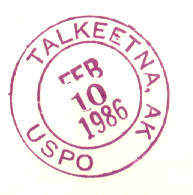Background:
Chris Anderson: “Everyone’s taste departs from the mainstream somewhere, and the more we explore alternatives, the more we’re drawn to them. Unfortunately, in recent decades such alternatives have been pushed to the fringes by pumped-up marketing vehicles built to order by industries that desperately need them.”
myself: “It’s about relationships. Being a customer in the long tail is not as much about acquiring the things that are unique to you. It’s about connections.”
Susan Mernit: “…web-like organizations don’t fit corporate structure, so we’ll see those networks grow outside and around the new tools as they’re fitted into the mainstream–and see additional tools (maybe FOAF?) radiate out from their hub.”
Steve Gillmor: “Attention is about what we do with our time, and attention will win. Friends and family are about who we do it with, and we will all win.”
Ross Mayfield: “I almost see a new system of checks and balances between personalization (corporate interest, information-centric), customization (personal interest, information-centric) and socialization (social interest, relationship-centric) as memes lobby for attention.”
Edward Vielmetti: “…if you go far enough away from the centers of media and economic production, it’s hard to find lots of choices in the stores and in the movie theaters.”
“Imagine a crystal clear bitterly cold night in Alaska, inside a cabin with candles on the windowsill and these two guys playing for you and a bunch of friends next to the woodstove. Oh my god….”
 Talkeetna, Alaska has a population of 772 souls, and is a three hour drive from Anchorage (assuming the road is open and the moose aren’t rutting). In the winter, it can get down to 30 degrees below zero there. And that’s without the windchill.
Talkeetna, Alaska has a population of 772 souls, and is a three hour drive from Anchorage (assuming the road is open and the moose aren’t rutting). In the winter, it can get down to 30 degrees below zero there. And that’s without the windchill.
There’s a tiny little cabin in Talkeetna. At 12’x12′, it’s probably smaller than your bedroom. (It’s certainly smaller than your garage.) In the winter, it’s heated with a single wood stove.
I would argue it is the heart of the Long Tail.
(now playing, Amy Rigby)
How can any place, let alone an unfinished cabin in the middle of the Alaskan tundra, be the “heart” of the Long Tail? Well, this particular cabin is ground zero for a little radio station called Whole Wheat Radio, a self-described “labor of love” according to its creators Jim and Esther. But, although it’s served up 2.9 million songs to over 180,000 web-based listeners, it’s not a typical “radio station” playing to a passive audience. From the WWR website:
“By definition. an automated radio broadcast is pretty boring. That’s where the listeners come in. The absolute best way to listen to Whole Wheat Radio is to keep the web site handy in your browser. We call this the WWR Listener Console. Click here to see how it looks.
Using the WWR Listener Console, listeners can…
* Get detailed information about the music being played (including photos and website links)
* Make music requests
* Communicate with each other, using a live chat window
* Type a message to be read on the air (it’s read by a synthesized voice)
* See who else is listening, and where they are from
* View an automated display of photos and pictures (and you even request a different set of images).”
It’s this community aspect, this relationship infrastructure, that makes WWR unique. There are thousands upon thousands of internet, satellite, and terrestrial radio stations. What is it about the little cabin that has not only drawn 180,000 listeners to the website, but has also convinced all these people (scroll down for the full effect) to travel to the middle of friggin’ nowhere to play guitars, sing songs and eat potato salad?
(now playing: Peter Mayer)
Whole Wheat Radio, both online and in the wilderness, is a relationship hub. It’s a nucleation site where socialization can occur, for people who have similar “music taste” vectors. Similarly, this place, and this place, and all these places are also relationship hubs in the Long Tail.
Relationship hubs are passion amplifiers. Prior to the having the ability to connect with others who also have an interest in a particular obscure topic (read “niche in the Long Tail”), we all needed to indulge our various idiosyncrasies solo. As a result, sometimes those aspects of our personalities atrophied and withered away for lack of feedback and support. No longer is this the case. The Long Tail is an opportunity for individuals to embrace our true interests and connect with others who share them.
(now playing: Big Head Todd and the Monsters)
Who’s on right now? “16 Listeners In: Seward, Alaska – Victoria, British Columbia Canada – San Rafael, California – Half Moon Bay, California – Escondido, California – Indianapolis, Indiana – Derby, Kansas – Wichita, Kansas – Burtonsville, Maryland – Tucumcari, New Mexico – Old York, New York US – Fayetteville, North Carolina – Oklahoma City, Oklahoma…“
Update:
Tim Bray and Julie Leung: “the Long Tail is actually a tangled mess of microcommunities and subcultures and tribes and hobbies and fanatics”


 O no. A big miss on the new
O no. A big miss on the new  A couple of nuggets from Mark Cuban’s recent post, “
A couple of nuggets from Mark Cuban’s recent post, “

